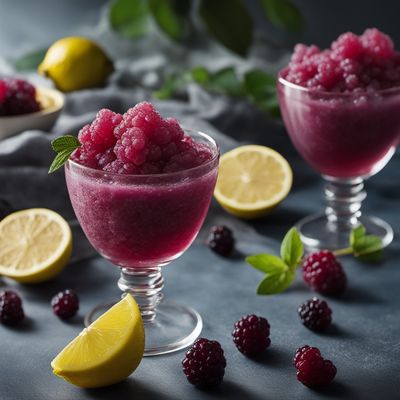
Ingredient
Mulberries (black and white)
Nature's Sweet Treasures
Mulberries are small, round berries that come in various shades of black and white. They have a juicy texture and a flavor profile that is reminiscent of a mix between blackberries and raspberries, with a subtle tartness. These berries are often enjoyed fresh or used in a variety of culinary creations.
Origins and history
Mulberries have a long history that dates back thousands of years. They are native to Asia, Europe, and North America, and have been cultivated for their delicious fruits since ancient times. In many cultures, mulberries hold symbolic and medicinal significance. They are also associated with folklore and traditional customs.
Nutritional information
Mulberries are a good source of vitamin C, fiber, and antioxidants. They are also low in calories and fat, making them a healthy addition to a balanced diet.
How to select
When selecting mulberries, look for plump and firm berries that are free from bruises or blemishes. The color should be vibrant and uniform. Avoid berries that appear overly soft or mushy, as they may be overripe.
Storage recommendations
To prolong the freshness of mulberries, store them in the refrigerator in a breathable container or a paper bag. Avoid washing them until just before consumption to prevent premature spoilage. Use them within a few days for the best flavor and texture.
How to produce
Mulberry trees are relatively easy to grow, and they thrive in temperate climates. They can be grown from seeds, cuttings, or purchased as young saplings. Provide them with well-draining soil, ample sunlight, and regular watering to ensure healthy growth and fruit production.
Preparation tips
Mulberries can be enjoyed fresh as a snack, added to salads, or used in a variety of sweet and savory dishes. They make a delicious addition to smoothies, jams, pies, and desserts. They can also be dried and used as a flavorful ingredient in trail mixes or granola bars.
Substitutions
Blackberries or raspberries can be used as substitutes for mulberries. They offer a similar flavor profile and can be used interchangeably in most recipes.
Culinary uses
Mulberries are commonly used in jams, pies, desserts, and smoothies. They add a natural sweetness and vibrant color to these creations.
Availability
Mulberries are commonly available in regions with temperate climates, including Asia, Europe, North America, and parts of Africa. They are cultivated in countries such as China, Turkey, Iran, and the United States.


